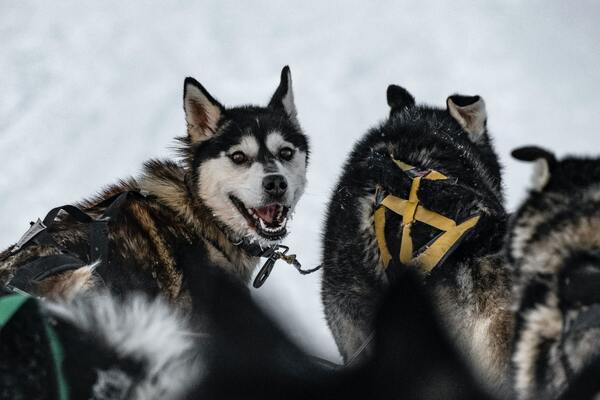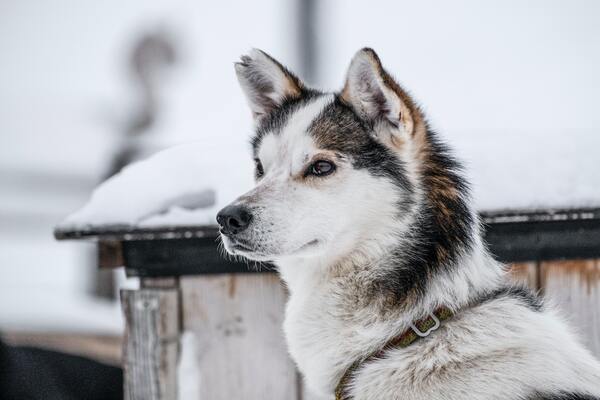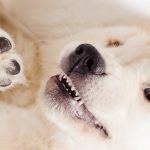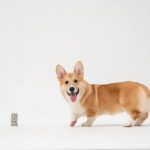The Alaskan Husky is a designer dog breed that shares genetics with the Siberian Husky. It is larger than the Siberian Husky, standing between 20 and 23.5 inches tall and weighing between 35 and 60 pounds. The Alaskan Husky has a lifespan of 12 to 15 years. Let me tell you the truth about the Alaskan Husky.
Alaskan Husky
Alaskan Huskies are larger than Siberian Huskies, but with a leaner physique. These Alaskan dogs typically have brown eyes, in contrast to their Siberian cousins.
Long legs, a broad, deep chest, and a bushy tail curled up over their backs are all characteristics of these hybrids. Many of them tend to be wolf-like in appearance.
A wide range of colors, including gray, white, black and white, blonde, orange, brown, red, or cream, are possible for these Huskies’ coats.
The Alaskan Husky is not a purebred, nor is she actually a breed of dog at all. She is defined by her purpose: for use as a sled dog.
She was originally bred in Alaskan villages from a mix of various Northern breeds, including the Siberian Husky, Greyhound, and the German Short haired-Pointer. She is still bred today for use as a sled dog in dog sled racing, a winter dog sport that takes place in Alaska.
She is not recognized by any breed clubs or kennel clubs and is classed as a working dog; unlike the Siberian Husky and the Alaskan Malamute, who are both purebreds, registered with the AKC and CKC and used as both a working dog and a show dog.
Features Of The Alaskan Husky
Intelligent And Focused
Again, the reason why these huskies are smarter and more focused than the majority of other dog breeds is because of the ongoing cross-breeding. Huskies are now calm, obedient, and excellent at a variety of tasks as a result of cross-breeding. Because Alaskan Huskies frequently put in long shifts, they must be completely concentrated when running and sledding.
Prone To Separation Anxiety
Alaskan Huskies spend a lot of time with their owners and/or sled drivers. Because of their ongoing connection, these dogs experience separation anxiety when they are not with their owners or leaders.
It makes complete sense that these kinds of dogs experience this kind of anxiety given their selective breeding. Huskies are generally needy creatures who expect their owners to give them all of their time, which we all know is practically impossible. In Alaskan Huskies, this personality trait is even more obvious.
Like To Socialize
Alaskan Huskies are considered happy dogs who love to socialize. Children, adults, and other animals are all welcome to play with them. They are the kind of dogs that are deeply devoted to and delighted by human company. Additionally, they are gregarious dogs who like to hang out with other Alaskan Huskies.
No Constant Grooming
The Alaskan Husky does not need a lot of grooming, in contrast to other breeds of dogs. Despite the fact that no two huskies are alike, you will probably discover that the Alaskan sheds considerably less than the Siberian.
Huskies typically lose the majority of their fur at the start of spring. Do not become alarmed if you see your husky losing a lot of hair. They naturally lose a lot of furs, which is perfectly normal. Only twice a week should be set aside for grooming sessions, and bathing should be avoided, though daily combing is advised.

Prefer Cooler Climates
The Alaskan Husky cannot live in very hot climates. Given that she is from Alaska, where temperatures can fall as low as 80 degrees below freezing (-62), this may be another unsurprising point.2°C).
Don’t get an Alaskan Husky if you live somewhere where the temperature rises above 80 degrees (26 degrees Celsius).
Because of her thick fur and thermal under-layer, she will suffer terribly. Just picture wearing a wool sweater in the sweltering heat!
In temperatures above 70 degrees (20 degrees C), you shouldn’t exercise your Alaskan Husky.
In the summer months, it is a good idea to take out your Alaskan Husky in the mornings or the evenings when the sun is lower, and the temperature has dropped. Make sure you provide her with lots of water and don’t go at too fast a pace if you notice her struggling.
Another important point: do NOT shave your Alaskan Husky. Although it may appear that you are relieving her when it gets hot, all you are doing is increasing her risk of sunburn and removing her ability to control her body temperature.
Usually Healthy
Perhaps due to their hybridization, these dogs tend to be healthy and can live for up to 15 years.
However, certain strains are susceptible to some health issues that affect purebreds, so it’s important to be aware of these so you can treat your dog if necessary. These health concerns can include:
- Lysosomal storage disease
- Eye problems (including progressive retinal atrophy)
- Hypothyroidism
- Malformation of the larynx, causing a wheezing sound when breathing
Pack Animals
Alaskan Huskies have a strong pack instinct, having been bred to work closely with people and other dogs. They are gentle with people and need lots of contact with you, which makes them excellent companion dogs.
They are also incredibly sociable with other dogs, so they fit in well with a family who already has a dog or who would like more than one dog.
Trainable
Your Alaskan should immediately start receiving training. She is incredibly intelligent and very trainable; even at 8 weeks of age, she can learn many basic commands.
That being said, Alaskan Huskies can have a stubborn streak. If you ask her to do something she doesn’t feel particularly like doing at the time, she might not comply. Because of this, it’s critical that you establish a strong leadership position early on with your Alaskan Husky.





